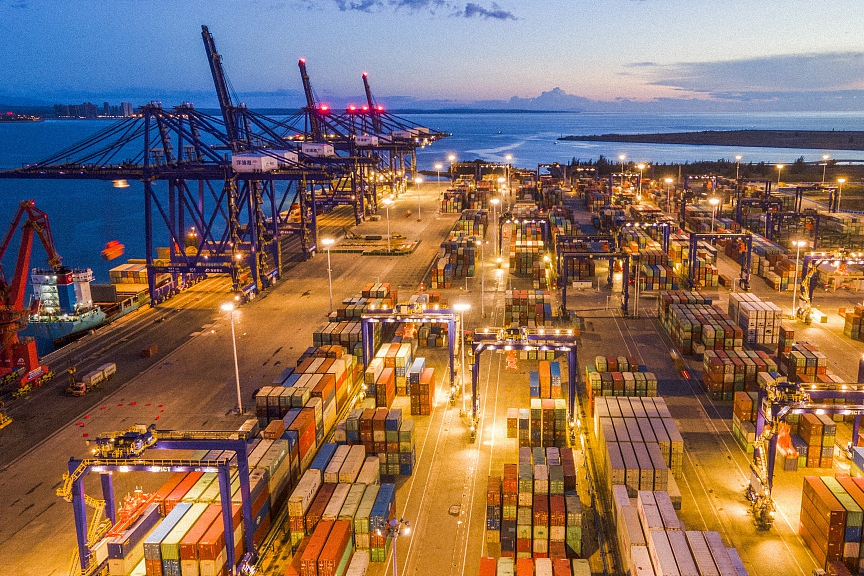Hainan leads the way in high-quality development
- By Tom Fowdy
 0 Comment(s)
0 Comment(s) Print
Print E-mail China.org.cn, April 17, 2022
E-mail China.org.cn, April 17, 2022

Hainan island sits off the coast of Guangdong to China's southwest. It is known for its tropical resorts, beaches, and mountainous terrain, which has made it a favorite destination for mainland tourists, especially when international travel is limited due to the COVID-19 pandemic.
However, the island is not just a fanciful place to visit; it is also significant for China's economic and national development now that it has gained free trade port status.
After the launch of the island's free trade port initiative, 36 project deals valued at up to $2 billion were signed on the island. These were from a variety of sectors, including modern logistics, biomedicine, high-end manufacturing, the digital economy, offshore trade, business aviation, modern finance, and high-tech agriculture, and involve many foreign investors. In conjunction with this, the island has also received considerable retail investment over the past year, with duty-free sales in the city having increased 73% year on year since 2021.
As a tropical and mountainous region populated by 10 million people, Hainan province is small in scale compared to other areas of China. Its geography makes it unsuitable for urban manufacturing and supply chain-related businesses, which have steered the densely populated industrial regions of the country to rapid growth, or fueled other forms of labor-intensive work. However, geographical conditions also make it suitable for tourism and service-related industries. This means Hainan requires a different growth strategy to China as a whole, and this is precisely why a unique development plan has been laid out.
This plan involves establishing Hainan as one of the critical hubs for tourism, retail, finance, and free trade in China. In creating a free port, Hainan's location, facing Southeast Asia, allows it to be a convenient and pivotal point for the import of tariff-free foreign goods into China, a key aspect of the country's integration into the Regional Comprehensive Economic Partnership (RCEP) and other agreements.
The swift and cheap access to foreign imported goods the free port establishes, combined with dynamic tourism promotion, subsequently lay the foundations for a booming retail environment on the island.
Domestic and foreign tourists will be able to visit Hainan and buy goods of all kinds, given that it has been fashioned into a transit hub for luxury retail and tourism. This coincides with the expansion of the Haikou Meilan International Airport, which recently opened a second terminal designed to pivot the island to a crossroads for travel throughout Southeast Asia and the wider region.
These unique and favorable business conditions provide an opportunity for capital and financial firms to invest. This is significant not just for China itself, but Asia as a whole. In every capacity, Hainan's economy is being refashioned to integrate itself with a broader geographic area and to transform it into a hub and a gateway to China as well as the countries around it. This shows how China tailors its economic development strategies not only to the conditions of specific regions, but also in the view of globalization, or a "community of a shared future for mankind."
Tom Fowdy is a British political and international relations analyst and a graduate of Durham and Oxford universities. For more information please visit:
http://www.china.org.cn/opinion/TomFowdy.htm
Opinion articles reflect the views of their authors, not necessarily those of China.org.cn.
If you would like to contribute, please contact us at opinion@china.org.cn.






Go to Forum >>0 Comment(s)